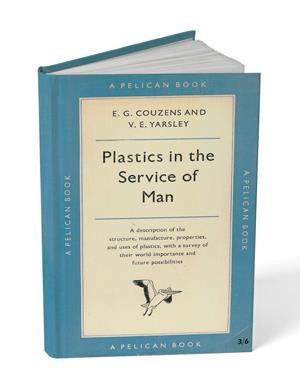Philip Ball covers the chemical history of Penguin’s inexpensive educational books
The relaunch of Pelican Books, an imprint of Penguin, in May prompted fond reminiscences in the media about these distinctive, low-cost non-fiction paperbacks. The series launched in the 1930s with George Bernard Shaw’s The intelligent woman’s guide to socialism, capitalism, sovietism and fascism, which exemplified Pelican’s purpose: covering serious topics in an accessible but non-patronising manner. Selling paperbacks at the cost of a packet of cigarettes was a radical idea for its time, and Penguin’s claim today that the books ‘lower[ed] the traditional barriers to knowledge’ seems amply justified by the tributes the relaunch has elicited.
Penny intellectual

I have been surprised to see how many of the trademark blue covers are dotted around my bookshelves. There is Conrad Waddington’s The scientific attitude (1941), for example, and Plastics in the service of man (1956) by Edward Couzens and Victor Yarsley shows that chemistry wasn’t neglected. However, chemists have another reason to appreciate Pelicans that has little to do with their educational interiors: these are books we can judge by their covers.
For the feature that united and distinguished the Pelicans was their unmistakeable livery: that shade of blue veering towards turquoise, which chemists will recognise instantly as a copper pigment of some kind. In fact, Pelican covers supplied one of the earliest, and surely the most familiar, applications of a new and important class of colourant compounds: the phthalocyanines. Pelican blue is copper phthalocyanine, discovered in 1928, which was sold under the trade name Monastral blue.
Birth of the blue
Like many colouring agents throughout history, this one was found by accident. In the late 1920s, scientists at Scottish Dyes in Grangemouth, UK – soon to merge with ICI – were investigating a blue impurity that appeared during the manufacture of phthalimide, which was itself used to synthesise the blue dye indigo. I recommend the short film documenting this investigation, not just for the splendidly absurd pre-war diction of the narrator but for tips on how to conduct a chemical analysis while stylishly smoking a pipe.
The isolated impurity was studied in detail by Patrick Linstead at Imperial College London, UK. In 1934, he showed that the coloured material had some structural similarity with the porphyrin at the heart of chlorophyll, being a four-ring heterocyclic compound with a metal atom (here copper) at its centre.1 Linstead christened this structure phthalocyanine.
Over the next few years the compound was developed as a commercial pigment by ICI, where a chemist named Charles Dent patented a method of making Monastral blue. Dent went on to have a colourful career, working on invisible ink as a consultant for the British censorship department during the war, and being fictionalised as a villain shot by James Bond in Ian Fleming’s Dr No. The juicy details are in Kristie Macrakis’s recent book Prisoners, lovers and spies.
Phthalocyanine blue ‘will soon be covering the printed pages’, prophesied one Professor Tattershall of the University of Western Australia in 1936. He was right: Pelican printed its first books in 1937, the covers adorned with this appropriately eye-catching but sober hue. And the artists’ paint company Winsor and Newton began using phthalocyanine blue and a green chlorinated version in the late 1930s – still available today.
Still got the blues
The Scottish Dyes chemists were not quite the first to see copper phthalocyanine, however – it was also synthesised by accident in Switzerland in 1927 by Henri de Diesbach and Edmond von der Weid.2 It pleases me that the first of these authors has essentially the same surname as the early 18th century German alchemist who serendipitously discovered another blue pigment – Prussian blue, which, like the phthalocyanines, remains a compound of great interest to chemists.
Of course, the most famous accidental discovery of a colourant is William Perkin’s discovery of mauve in 1856. ICI was one of the many chemical giants that emerged in the early 20th century on the back of the revolution in synthetic dyes spawned by Perkin’s work. One of ICI’s precursors was the Manchester, UK, dye manufacturer Levinstein, which grew out of a plant set up at Ellesmere Port, UK, to make indigo beyond the reach of German patent law. Levinstein merged with British Dyes, and the resulting company then merged with others in 1926 to become ICI. I would love to know – perhaps a reader can tell me – whether ICI’s famous early logo was also printed in Monastral blue; it certainly looks like it.
Sadly, the new Pelicans won’t have this pigment on their covers and spines. They will instead wear a mix of inks that gives Pantone 3105 U, which is more turquoise than the original. But the exact colour had already mutated somewhat during the first life of Pelicans. Tastes change and chemistry, I suppose, moves on.
Read more from our chemistry and art theme issue












No comments yet